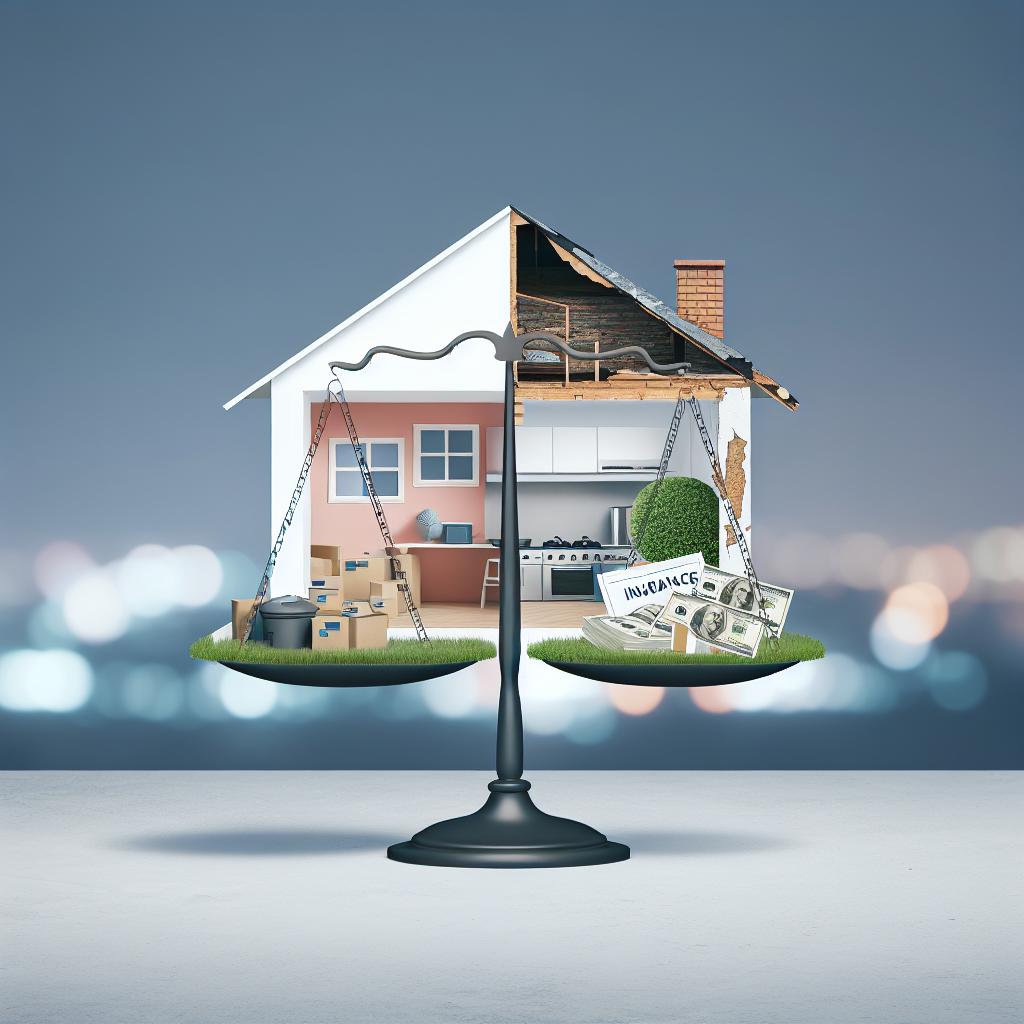The Impact of Home Renovations and Upgrades on Insurance
Renovating and upgrading your home can significantly impact your home insurance policy. These changes can alter the valuation of your property and subsequently affect your premium. Understanding how improvements to your home influence insurance costs is crucial for homeowners. To grasp the full extent of this impact, it’s essential to examine various aspects, including the types of renovations, how they modify insurance terms, and appropriate actions to take post-renovation.
Renovations That Increase Home Value
When you enhance your home’s value through renovations, such as adding a new room or updating the kitchen, your insurance may need to be adjusted. Insurers calculate premiums based on the cost to rebuild your home. An increase in property value usually leads to a higher rebuild cost, potentially increasing your premium. Homeowners should inform their insurer of any major upgrades or renovations to ensure coverage aligns with the new value. Renovations can involve structural changes or functional improvements, both of which may impact the insurance policy differently.
Structural Changes
Large-scale renovations, like adding a new floor or extending a section of your house, fall under structural changes. These modifications typically increase your home’s replacement cost. It’s advisable to reassess your insurance coverage limits to account for the additional value and to prevent underinsurance. For instance, adding a floor or expanding a kitchen not only increases the total area but also enhances the market appeal and functionality of your home, which could lead to a rise in its overall valuation.
Functional Improvements
Smaller renovations, such as refurbishing a bathroom or modernizing a living area, might not dramatically change the structural aspect but can still significantly impact the overall home value. Such functional improvements often lead to a better living experience, increasing both aesthetic appeal and potential resale value. Though these changes might not require as substantial an insurance adjustment as structural changes, it’s still crucial to notify your insurer, ensuring that the insurance reflects the home’s actual value.
Upgrades That Enhance Safety
Certain upgrades can potentially decrease your insurance premium. Enhancing your home’s safety features, like installing new electrical systems, updating plumbing, or implementing a comprehensive security system, can make your home less prone to damage or theft. Insurers may offer discounts for these improvements, as they reduce the likelihood of a claim. Understanding the types of upgrades can help determine how they might benefit your insurance policy.
Security Enhancements
Introducing robust security measures, like modern alarm systems, surveillance cameras, or reinforced doors and windows, significantly reduces the likelihood of burglaries or break-ins. These enhancements demonstrate proactive measures taken by homeowners to protect their property. Insurers view these improvements positively and might offer lower premiums as a reward for reducing potential risks.
Replacement of Outdated Systems
Replacing outdated systems, such as an antiquated HVAC system or a leaky roof, with modern, efficient alternatives can impact insurance premiums. Updated systems can lower the risk of incidents that might require an insurance claim, and insurers may reward proactive maintenance with premium discounts. Investing in energy-efficient appliances or eco-friendly solutions can further augment these benefits, showcasing a commitment to sustainability and long-term savings.
Informing Your Insurer
It’s critical to keep your insurance provider informed of any changes to your property. Failing to do so might result in inadequate coverage or even policy cancellation. A quick email or phone call can prevent costly misunderstandings. Always update your insurer immediately after completing significant renovations or upgrades to prevent any discrepancies in coverage and ensure that your home is accurately protected.
Policy Review and Adjustments
Post-renovation, conduct a thorough policy review to ensure your dwelling coverage, personal property coverage, and liability protection reflect your home’s current status. Consulting with your insurance agent can provide guidance on necessary adjustments to maintain sufficient protection. Reviewing and adjusting your policy ensures that any newly acquired assets or enhanced features are adequately covered, safeguarding against unexpected losses.
Potential Impact on Liability Insurance
Modifications such as adding a swimming pool or buying a trampoline can increase liability risks. Liability insurance safeguards against accidents occurring on your property. Discuss potential adjustments with your insurer if such features have been added to your property. It’s important to understand how recreational additions could impact your liability limits, as they might present increased risks or attract higher costs.
Conclusion
Renovations and upgrades have varied effects on home insurance policies. While certain improvements might lead to reduced premiums, others that enhance your home’s value could increase costs. Always keep open communication with your insurer to maintain a policy that best covers your needs. As a homeowner, understanding these implications will enable informed decision-making and effective risk management. For more detailed information, you can consult resources from the Insurance Information Institute or contact your insurance provider directly. Maintaining transparency with your insurer ensures that your home remains protected against unforeseen events while optimizing your insurance benefits.
